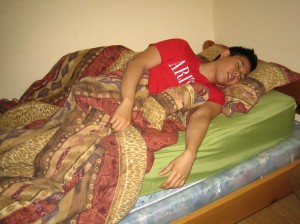Unconsciousness typically occurs once an individual is unable to respond to stimuli and appears to be in a state of sleep. An individual can be unconscious only for a few seconds or for extended periods.
Individuals who are unconscious do not respond to shaking or loud sounds. In some cases, they might even stop breathing or the pulse can become faint. This would require immediate emergency assistance. The earlier the emergency first aid for unconsciousness is given, the better the outlook for the individual.

Causes of unconsciousness
Unconsciousness is where an individual becomes unresponsive. The individual could not communicate and will not respond to stimulation. It can be brought about by an injury or major illness or even complications from alcohol or drug abuse. The common causes of unconsciousness include:
- Severe blood loss
- Vehicular accident
- Blow to the head or chest
- Alcohol poisoning
- Drug overdose
An individual can become temporarily unconscious if there are abrupt changes within the body. The common causes of temporary unconsciousness include:
- Low blood pressure
- Low blood sugar
- Dehydration
- Syncope
- Heart rhythm problems
- Straining
- Neurologic syncope
- Hyperventilation
Signs that an individual will become unconscious
These symptoms can indicate that unconsciousness is about to occur:
- Confusion
- Abrupt inability to respond
- Speech that is slurred
- Rapid heartbeat
- Lightheadedness or dizziness
How to deliver first aid
In case an individual is unconscious, there are certain first aid steps to follow:
- Check the person if he/she is breathing. If the individual is breathing, position on his/her back.
- Elevate the legs at least 12 inches higher than the ground
- Restrictive or tight clothing should be loosened. If the individual does not regain consciousness in a minute, called emergency assistance right away.
- Inspect the airway of the individual to make sure that it is not obstructed.
- Check again if the individual is breathing, moving or coughing since these are signs of positive circulation. If these are absent, you have to start CPR until emergency assistance arrives.
How to perform CPR
CPR is performed in cases in which an individual stops breathing or the heart no longer beats. If an individual is unconscious or stops breathing, call for emergency assistance right away. Before starting CPR, ask loudly, “Are you OK?” If the individual does not respond, start CPR.
- Position the individual on his/her back on a firm surface.
- Kneel close to the individual’s neck and shoulders.
- Position the heel of your hand on the center of the chest. Place your other hand directly above the first hand and interlock your fingers. Your elbows should be straight and move the shoulders up above your hands.
- With the weight of the upper body, push straight down on the individual’s chest at least 1.5 inches for children or 2 inches for adults and then release the pressure. The chest compressions are repeated up to 100 times per minute.
- Pinch the nose close and cover his/her mouth with yours to create an airtight seal.
- Deliver two one-second breaths and observe the rising chest of the individual.
- Continue to alternate between the compressions and breaths – 30 chest compressions and 2 breaths until emergency assistance arrives or there are no signs of movement.
